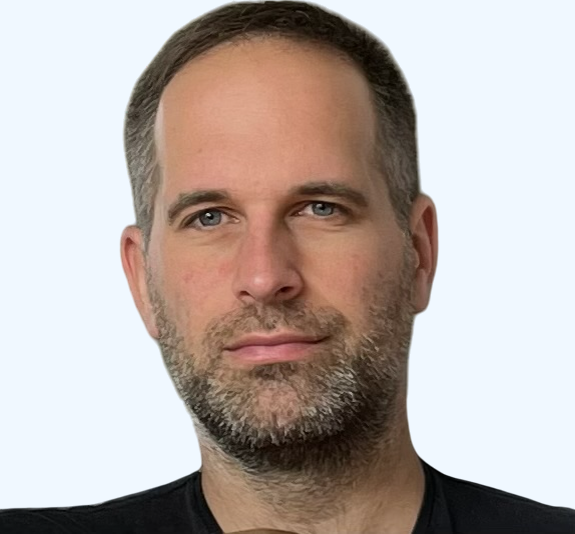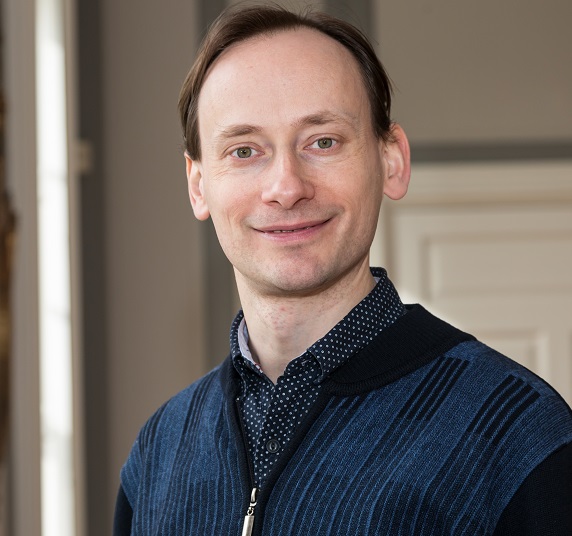About the Spring School
Welcome to the Poznań Spring School in Mathematical Physics! This event will be held at Adam Mickiewicz University in Poznań, Faculty of Mathematics and Computer Science, from April 7 to April 16, 2025.
The Spring School aims to bring together PhD students and researchers in mathematical physics to discuss the latest advancements in mathematical quantum field theory and many-body systems.
The study of interacting Bose gases, particularly Bose–Einstein condensation, has gained significant attention in recent years due to their rich quantum phenomena. Quantum energy inequalities in quantum field theories impose constraints on negative energy densities. Both interacting Bose gases and quantum energy inequalities showcase fascinating quantum effects with no counterpart in classical physics. In this Spring School, we want to discuss the mathematical frameworks underlying these phenomena.
Program Highlights:
Week 1 (07.–11.04.): Two lecture series introducing key mathematical concepts from quantum field theory in curved spacetimes and Bose–Einstein condensation.
Week 2 (14.–16.04.): Continuation of the lecture series on quantum field theory in curved spacetimes.
More details of the program can be found below. Participants can register for the first or for both weeks.
As a special session, the Spring School will feature the 20th Colloquium on Mathematics and Foundations of Quantum Theory, co-organised by Dirk Deckert (LMU Munich), Felix Finster (Regensburg), and Peter Pickl (Tübingen).
Organisers: Wojciech Dybalski, Janik Kruse
Lecture Speakers

Marcin Napiórkowski
University of Warsaw
Bose–Einstein Condensation

Ko Sanders
Leibniz University Hannover
Quantum Field Theory in Curved Spacetimes
Lectures
Bose–Einstein Condensation – a mathematical physics perspective (BEC)
Interacting bosons are unique quantum systems whose low-temperature phases exhibit fascinating quantum mechanical effects at a macroscopic scale. The goal of these lectures will be to present mathematical foundations and recent developments related to the mathematical study of such systems.
Quantum Field Theory in Curved Spacetimes (QFT)
These lectures aim to provide an up-to-date introduction to the mathematical structure of Lagrangian Quantum Field Theories in curved spacetimes. A particular topic of interest are the Energy Conditions of General Relativity and the corresponding Quantum Energy Inequalities for quantum fields. We will discuss their range of validity and their consequences for the mathematical structure and for the physical predictions of the framework (e.g. the celebrated Singularity Theorems of Hawking and Penrose).
Registration
The registration is closed.
- General registration deadline: April 1, 2025.
- Deadline for talk submissions:
March 15, 2025extended until March 26, 2025.
The contributed talks do not have to be directly related to the main topics of the Spring School.
If you plan to attend the dinner and have any dietary preferences, please mention them in the comments section of the form. We will do our best to accommodate all dietary needs when selecting a restaurant.
Venue
The Spring School will take place at the Faculty of Mathematics and Computer Science on Kampus Morasko. The campus is easily accessible from the city centre by tram. The nearest stop is Osiedle Sobieskiego, from where it is about a 10-minute walk to the institute. The main entrance lies on the north side of the building.
The lectures and the colloquium will be held in Room A1-33/34. When you enter the building from the north side, you will find the room in the corridor on the left-hand side.
Address:
Faculty of Mathematics and Computer Science
Adam Mickiewicz University
ul. Uniwersytetu Poznańskiego 4
61-614 Poznań, Poland
Accommodation: We recommend booking a hotel in the city centre of Poznań, e.g. Hotel Mercure, Hotel Kolegiacki, or Traffic Hotel Stare Miasto.
Travel to Poznań: Poznań is well-connected by train from most major Polish and German cities. For example, a direct train from Berlin takes around 2.5 hours. There are also several Flixbus connections to Poznań. The city has an international airport.
Program
Program of Week 1 (07.–11.04.): Room A1-33/34
| Time | Monday | Tuesday | Wednesday | Thursday | Friday |
|---|---|---|---|---|---|
| 09:00 – 10:30 |
QFT | QFT | QFT | QFT | QFT |
| 10:30 | break | break | break | break | break |
| 11:00 – 12:30 |
BEC | BEC | BEC | BEC | |
| 12:30 | Lunch | Lunch | Lunch | Lunch | |
| 14:00 – 15:30 |
Colloquium | Contributed Talks | BEC | ||
| 15:30 | break | ||||
| 16:15 – 18:00 |
Colloquium | ||||
| 19:00 | Dinner |
The dinner will take place at Restauracja Bamberka. Address: Stary Rynek 2, 61-772 Poznań.
Program of Week 2 (14.–16.04.):
| Time | Monday | Tuesday | Wednesday | Thursday | Friday |
|---|---|---|---|---|---|
| 09:00 – 10:30 |
QFT | QFT | QFT | ||
| 10:30 | break | break | |||
| 11:00 – 12:30 |
QFT | QFT | |||
| 12:30 | Lunch | Lunch |
Colloquium
As a special session, the Spring School will feature the 20th Colloquium on Mathematics and Foundations of Quantum Theory. The Colloquium will take place on Tuesday, 08.04.2025, from 14:00 to 18:00.
14:00–14:45: Ko Sanders (Hannover) – Entanglement and separable states in relativistic QFT (slides)
In quantum physics, entanglement is the phenomenon of primary interest. It defines the distinction to classical physics, allows for remarkable experiments and raises fundamental questions about nature. This is all the more so in relativistic quantum field theories (QFTs), where the dependence of entanglement on the localisation in spacetime can be investigated. In particular, one can consider the spacetime dependence of the entanglement entropy, which measures the amount of entanglement in a state by comparing it to "nearby" separable states. In this talk I will start with a review of the history and basics of entanglement and I will describe some results concerning the entanglement entropy, keepnig the role of spacetime in mind. Then I will focus on free scalar QFTs as a toy model and present some results on nice separable states that may be used to estimate the entanglement entropy.
14:45–15:30: Marcin Napiórkowski (Warsaw) – Bose–Einstein Condensation and Spontaneous Symmetry Breaking (slides)
The concept of spontaneous symmetry breaking (SSB) means quite generally that a symmetry of the Hamiltonian or Lagrangian of a system is not present in the state under consideration (usually a ground state or a thermal equilibrium state). In my talk I will discuss SSB in the context of Bose–Einstein Condensation. It turns out that for mean-field Bose gases these two concepts are equivalent.
15:30–16:15: break
16:15–17:00: Shadi Tahvildar-Zadeh (Rutgers) – Electrons, Photons, and Darwin's Dream (slides)
In this report on several joint works with M. Kiessling, M. Lienert, and L. Frolov, I will present a quantum-mechanical treatment of Compton scattering, in one space dimension, in which photons are treated as particles on equal footing with electrons. This is achieved through a certain relativistic extension of the framework proposed in 1927 by de Broglie and 25 years later again by Bohm, and relies on our ability to describe (in any number of space dimensions) not just the electron, but also the photon, as a point particle whose motion is guided by a relativistic quantum mechanical wave function, one that possesses a conserved time-like future-directed probability current. The interaction between the two particles is implemented via a Lorentz-invariant no-crossing-of-paths boundary condition for the multi-body, multi-time wave function of the system. Boundary conditions are imposed on the submanifold of coincident events in this configuration space and are shown to be compatible with particle current conservation. The corresponding initial-boundary-value problem is proved to be well-posed, and particle trajectories are shown to exist globally in a Hypersurface Bohm-Dirac setting, for typical initial configurations. I will then report on our recent extension of this work to a quantum-mechanical three-body system, still in one space dimension, comprised of one photon situated between two electrons. The electrons do not interact directly, but only via the photon bouncing between them. The corresponding initial-boundary value problem is shown to be well-posed, and it is shown that the unique solution can be represented by a convergent infinite sum of Feynman-like diagrams, each one corresponding to the photon bouncing between the two electrons a fixed number of times.
17:00–17:30: Fabian Nolte (LMU Munich) – Time-Dependent Van-Hove Model (slides)
Various techniques have been developed to address the infrared catastrophe in Nelson's model. By adapting these methods to the time-dependent van-Hove model, we can directly compare the resulting scattering operators within a simplified and fully solvable framework.
17:30–18:00: Marco van den Beld Serrano (Regensburg) – Baryogenesis in conformally flat spacetimes (slides)
Since the Dirac equation predicts an overall matter/antimatter symmetry, where does the observed asymmetry in our Universe come from? This is an important unanswered question that haunts modern cosmology. In particular, can we attempt to solve this problem using tools from global analysis and differential geometry? The aim of this talk is to address the previous question through the introduction of a baryogenesis mechanism suggested in the theory of Causal Fermion Systems. Moreover, I will briefly discuss the mathematical concepts underlying this mechanism and sketch how to model/describe baryogenesis in conformally flat spacetimes. Finally, I will present some recently obtained results in this setting. The talk is based on ongoing joint work with Felix Finster.
Contributed Talks
The session with contributed talks will take place on Wednesday, 09.04.2025, from 14:00 to 16:00.
14:00–14:45: Sascha Lill (University of Milan) – Momentum Distributions of Fermi Gases via Bosonization (slides)
We present recent findings on the momentum distribution of a fermionic gas, both in the mean-field and in the dilute regime.
15:00–15:45: Pierre Wang (Ecole Polytechnique) – Triviality of mean-field $\varphi^4_4$-theories (slides)
The differential equations of the Wilson renormalization group are a powerful tool to study the Schwinger functions of Euclidean quantum field theory. In particular renormalization theory can be based entirely on inductively bounding their perturbatively expanded solutions. Recently the solutions of these equations for scalar field theory have been analysed rigorously without recourse to perturbation theory, at the cost of restricting to the mean-field approximation. In particular it was shown there that mean-field one-component $\varphi^4$-theory in four dimensions is trivial if the bare coupling constant of the UV regularized theory is not large. This paper presents progress w.r.t. Kopper's previous paper: 1. The upper bound on the bare coupling is sent to infinity and the proof is extended to $O(N)$ vector models. 2. The unphysical infrared cutoff used for technical simplicity is replaced by a physical mass.